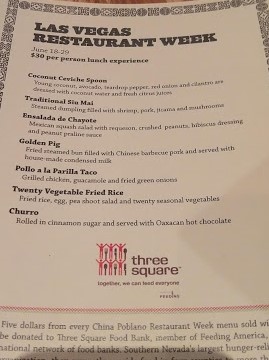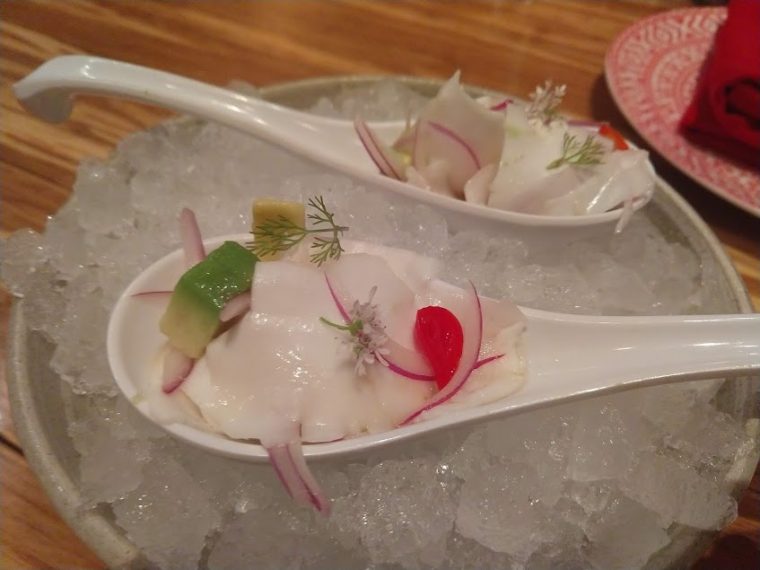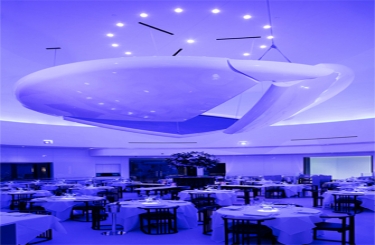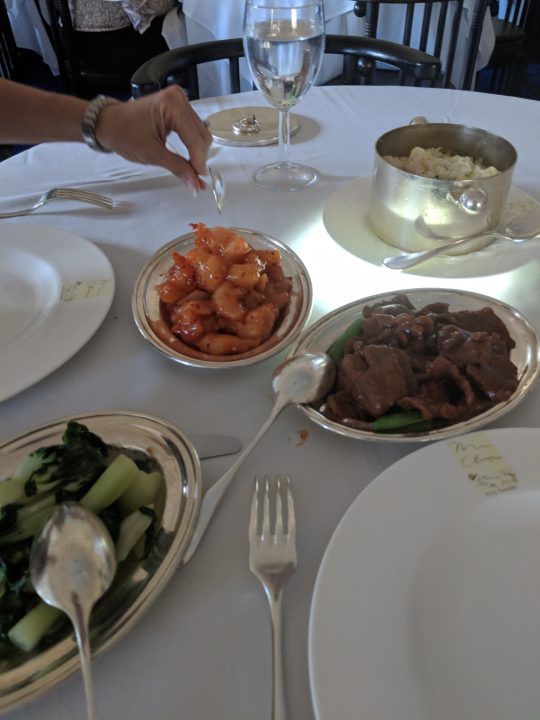Many have publicly mourned the death of Anthony Bourdain, and the recently-published final interview reignites this discussion. Bourdain’s ability to empathize with his dining companions served as the magical ingredient to each pictured dish. His willingness to share culinary stories in the same breath as geopolitical insights demonstrated that eating is much more than a survival tactic but a quest for primal human understanding. Food is flavored by the origin of its ingredients, the perspective of people preparing it, the confluence of history which led to it. Great meals can change your worldview, and bad ones can feel like a betrayal. On a recent trip to Vegas, we experienced the highs and lows of eating, likely colored by the stories which created each meal.
China Poblano has been on my To-Do list for quite some time. The website explains the legend of La China Poblana, an Asian girl kidnapped by pirates and shipped to Mexico in the midst of the furious trade of spice and silk. This is the story of what you will eat. The chef behind it all, Jose Andres, was the pioneer of Spanish Tapas who recently used his status as a world-renowned chef to change the face of Puerto Rican aid, literally delivering hope through his service following Hurricane Maria. Also, Bourdain seemed to like the guy (“He is just as driven, just as emotional, just as genuinely concerned, as he appears to be”). The China Poblano Restaurant Week offering included a $30 lunch tasting menu with additional artisinal cocktail pairing, donating $5 from each meal to Three Square Food Bank. This contributed to narrative of our meal, but the food more than told its story.
The interior is nothing fancy, with servers attentive but laid back. The pace of the meal kept challenging us with new small bites and accompanying drinks, a series of wow moments including a completely meaty-yet-vegetarian coconut ceviche and a Negroni made with smoky Del Maguey Vida Mezcal. Each plate felt thoughtfully prepared, with a balanced attention to innovation and tradition. The waiters word simple black uniforms, and checked in enough to feel taken care of without interfering. They seemed to care about the ingredients as much as they cared for their diners. I felt like everyone was working together towards a common understanding of how this food represented where we are at this moment.
In contrast, we visited Mr Chow inside Caesar’s Palace that evening for their summer set menu. The website highlights the journey of Mr Chow in bringing Asian cuisine to American fine dining, from London in 1968 to to Beverly Hills and New York in the 70s, and finally to Vegas in 2016. The restaurant inside Caesar’s Palace is impossible to find due to a lack of signage and every person we asked leading us in the opposite direction. Perhaps we should have understood this as a nod to their supposed exclusivity, or more likely as a sign to quit while we were ahead.
An elevator to the main dining area reveals the interior design of an uber-modern art gallery, featuring a crazy kinetic sculpture (designed by Chow himself and supposed to evoke the moon) shifting overhead every 20 minutes. It’s movement left us questioning which formations would surely crush us as it plummeted to earth, and which formations might spare via the dark side of the moon. The blue shag carpet had such a high pile that the waiters warned guests about it while tripping over it themselves. The service itself occurred from the center of a dining-in-the-round room, with French-style plating behind mini Chinese screens which the waiters then had to maneuver around. Each dish required about five people to serve, dragging each course on forever. And the Carts! The Famous Champagne Cart and the less famous dessert cart didn’t have enough room to fit through the tables, yielding as many injuries as an aisle seat in a coach. This French service which may have been de rigeur in the 60s seemed ridiculous in this setting and century.
Everything was completely tasteless, including the food. The hand-pulled Beijing-style noodles tasted of absolutely nothing until we covered them in “Mr Chow’s Sauce” which suspiciously resembled buffaloed Tabasco sauce. Watery bok choy, banal fried rice, and their special dessert (lychees) really confirmed that this was phoned-in food, but with less flavor than take-out. How did this happen to one of the world’s most sophisticated cuisines?
The Backstory
Chinese immigration in the 1880s lit the initial spark which brought Asian food to America, with restaurants providing a form of income and a sensory connection to the tastes of home. Organized tours of regional Chinatowns became common among the wealthy middle class by the 1890s, and despite ongoing prejudice and marginalization, curiosity about Chinese culture increased. In order to cater to less adventurous tastes, the food adapted to seem “both exotic and familiar”- a culinary assimilation. However, other similarly marginalized groups popularized and established traditional Chinese food as a staple of American cuisine, resulting in two very different versions of “authentic” Chinese food in America. (Chen, 2017) But what exactly is authenticity? According to Lu & Fine (1995), “Authenticity is not an objective criterion but is socially constructed and linked to expectations.” Maybe Mr Chow’s accurately represents the expectations of the times which created it.
According to Bourdain (2018), any guest here “is complicit, you know, everyone who goes to Nello or Philippe or Mr Chow understands that they are signing on to, uh, the despot’s club”. We unfortunately did not get that memo prior to our visit, but he was painfully accurate. A meal at Mr Chow is like a very expensive steak cooked well-done and doused with ketchup. And yet, the online reviews remain consistently high, ranging between 4-5 stars depending on the platform. Though the food was soulless, the waiters uncomfortable, & the entire experience a self-congratulatory performance, our fellow diners seemed to be happy as clams casino. The clientele willing to spend $21 for the bland Mr Chow Noodle appetizer clearly had different expectations. Am I just a snob? Or an anti-snob? If the others actually enjoy this pretense, why don’t they speak up? “Because they want to live in that bubble. […] Regardless of what your friends tell you, you’re an evil person, and you’re eating really shitty food, which you’re paying too much for”(Bourdain, 2018). Eating here was more of an existential crisis than sustenance.
Maybe both of these types of restaurants are necessary in a very divided world, but I hope to encounter more of the former than the latter. And yes, the (his)story matters.
Chen, Y. (2017-06-28). The Rise of Chinese Food in the United States. Oxford Research Encyclopedia of American History. Retrieved 3 Jul. 2018, from http://americanhistory.oxfordre.com/view/10.1093/acrefore/9780199329175.001.0001/acrefore-9780199329175-e-273.
Lu, S., & Fine, G. A. (1995). The Presentation of Ethnic Authenticity: Chinese Food as a Social Accomplishment. The Sociological Quarterly, 36(3), 535-553. doi:10.1111/j.1533-8525.1995.tb00452.x






